News
Ifọrọwanilẹnuwo: Jay Baruchel lori Ibanuje, Slashers ati 'Awọn iṣẹ ID ti Iwa-ipa'
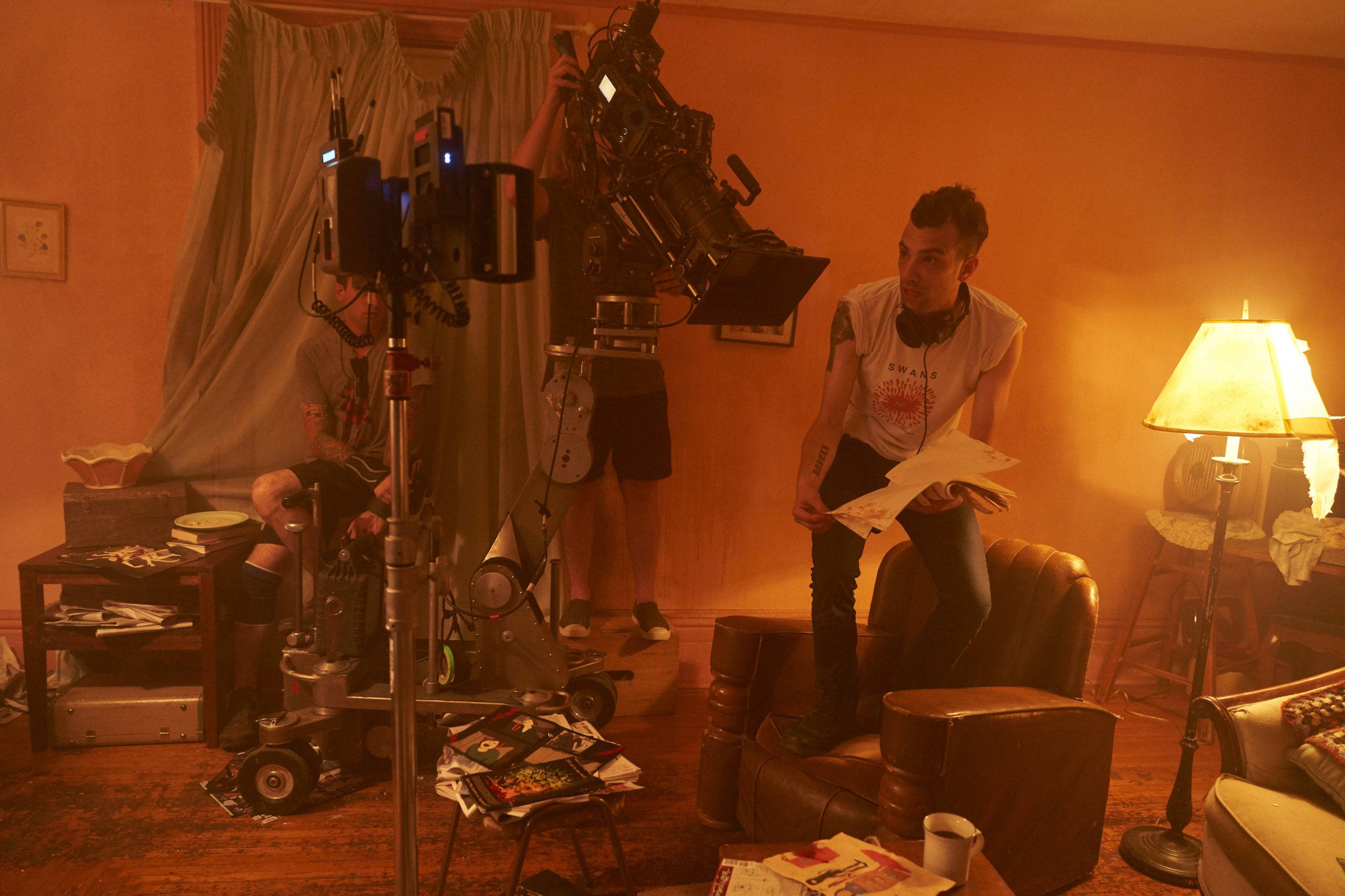
Kelly McNeely: So looping back to the horror genre sort of in general, I know that in the graphic novel, they mentioned that they’re trying to incorporate elements of 70s giallo cinema with the fascination with serial killers. I really like what you did with the character of Kathy, which is making sort of this Michelle McNamara type of character that’s really focused on the victims, and I thought that was such a fantastic concept. What drew you to make that change and what drew you to the project in general?
Jay Baruchel: Yeah, okay, cool. With Kathy — that’s so cool that you said Michelle McNamara, because my wife’s a massive fan of her book. But for me it was actually Ann Rule who for whatever reason does not get her love in true crime — like in in new hipster fucking true crime, no one’s got time for Rule — but she all but invented the fucking genre, and her book about the Green River killer is the hardest thing I’ve ever read. And truly difficult, because — and thank fuck that I read it as a 26 year old man — it hadn’t occurred to me before that I was reading this shit backwards. Or at the very least I was reading it irresponsibly, because her whole thing was for every 10 chapters about a victim, there is one chapter maybe about the killer, and every chapter is a biography that ends with this poor girl getting killed by this guy. And so you read all of these bios in this book that all get to the same fucking end. And it was this big epiphany for me as someone who was a true crime fan since I was a teenager.
And that fucking smashed into this other thing that Stephen King had pointed out when he used to do a column in Fangoria about how slasher movies typically are many things, but they’re not scary. And they’re kind of fucked up. He said, if you can name and sympathize more with Jason and you’re rooting for him to kill those kids, they’re not who the movie’s about. It’s about him. And then what is that experience as an audience member. And those two phenomena, they’re kind of similar.
I think they’re reacting to the deed that the man does as opposed to the thing that people suffered. And I didn’t like that in me, you know? And mercifully though, that realization came to me at a time during which Awọn iṣẹ ID ti Iwa-ipa couldn’t get made, and thank fuck, because we wrote the first draft of the treatment like, eight, nine years ago. And a lot of this shit hadn’t occurred to us yet, and we — Jesse [Chabot] and I — weren’t grown up enough to realize some of this shit.
I’m not trying to say our movie is like, you know, Stalker or Solaris or something, but I’m saying we originally wrote a pretty on-the-nose, what you’d expect kinda slasher flick that played out the same. We treated gore the way you treat a fight scene in a Bond movie, and it was this goal of how crazy can we get, right? Which is such a facile way to get in there, because even if you don’t believe all the kind of bleeding heart shit — but we legitimately do — even if you don’t believe that stuff, outlandish gore is not scary. When a crazy arterial spray fucking decapitation happens to the point where you high five the person next to you, you’re feeling lots of shit, but fear isn’t one of the things you’re feeling.
And so we were like, no matter what, we want to make something truly scary, because if a horror movie fails at everything else, it should succeed at being scary. And what’s scarier than looking at yourself and being disappointed with this man you’re becoming? [laughs] You know, that’s real shit, man. But also we don’t want to be too didactic and tell anybody like “don’t watch fucking Jason Lọ si Apaadi”, do whatever the fuck you want just be aware of what you’re putting in.
And also, in addition to that people should be — to what degree is up for debate — but people should be responsible for what they put out into the fucking world. Now, to what degree, that I’m interested in discussing and figuring out and probing and trying to understand, but to pretend that you have zero responsibility is horseshit, I think. And that’s something that a lot of lazy artists have hidden behind is “well no, fuck it, I can say whatever I want”. Well, yes, you can, but what is the sum total of this? What is the cumulative effect of growing up in a world? What are you adding to, what are you taking away from? What role are you perpetuating?
So us getting this tiny movie made — like any movie is a fucking miracle — it died three horrendous deaths before it eventually became a film. And at every time though, every horrendous death, we weren’t satisfied with the script as it was. We were like, well, this is a chance to make it better. We fuckin have nothing but time now, so we might as well keep making it good because how shitty would it be to finally get it made and it was a script that we wrote 10 years ago that we didn’t even fucking agree with anymore, and had acquired dust. So we just treated it like our thesis because we had no fucking choice. We weren’t just going to twiddle our thumbs. And so if the movie wasn’t in production, nobody was giving us money to make it, the least we could do is try to keep making it make sense. And so anyway, that’s how it ended up the way that it is.
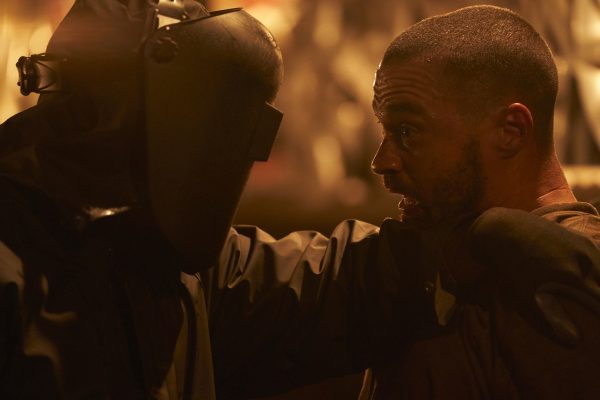
nipasẹ Awọn aworan giga
Kelly McNeely: The villain that you have, he’s seen so briefly but he leaves such a strong impression; that actor is fantastic in that role. How do you cast a killer?
Jay Baruchel: Yeah, with great difficulty. We cast him three days before we started shooting, which was like, really stressful, because I had all these amazing elements, but something that is significant in a horror film, especially this kind of horror film, is the killer. And we had two different offers out to two different folks that were like, sure things, who at the 11th hour, bailed. We had that process happen twice.
And all of a sudden, we’re now five prep days away from going to picture and we’re like, okay, we have to start planning for a situation in which we don’t have our killer on the first day of shooting. Okay, well, that’s all right. He’s in a mask, so we can hire a stunt double and get the stunt double in there, because we don’t see his face for the first few times. So, great, we’re gonna hire a stunt double and then and then hire an actor to match the stunt double? Well that’s kind of ass backwards, right? We were just kind of fucked.
And then on the Wednesday or the Thursday of that week, I said to my stunt coordinator Blair [Johannes], I said of all your guys, the guys you go to, who’s the best with dialogue? Who’s the best actor? And if you can tell me those guys, can you ask them if they’re willing to read? Because it’s largely a stunt role anyway, so whoever we cast, it’s going to be the double working more than the actor anyway.
So I’ve looked at every actor in the fucking city, you know, who do you like? And he’s like, okay, I’ve got three guys, one of them is injured so he can’t do it. The other guy, it’s too much for him, there’s too much dialogue, it’s outside his comfort zone. So fair enough, I respect him saying that. And what was nice was Simon Northwood put himself on tape.
And I swear to God, it was the best audition… period. And I’ve gone through two or three rounds of auditions in Toronto, which were national as well, so we’re also seeing Montreal, Vancouver, I was seeing everything. But, two rounds. And on the Thursday night before we start prep, I watch this audition tape. And by the way, if he wasn’t awesome, I was prepared to go that first week without. I would have bought time, we would have moved shit around, right? But he fucking killed it.
Every once in a while, you are aware of destiny. You are aware, you see things; you’re like, oh this is why those two guys that I thought were going to do it didn’t, and this is why nobody — in my opinion — killed it the way they should have killed it. This is why I couldn’t find anybody. This is why those other two stunt performers weren’t available, because it had to be Simon. And now all of a sudden, I don’t have to find a stunt double, now all of a sudden every kill scene gets that much safer because he’s involved in them, and he’s going to make sure my actors are protected. So he’s double shifting in every scene. He’s doing his thing as the killer, but he’s also on the ground to make sure everyone’s okay, which he did constantly.
He was a godsend and you know, one of the things I’m most proud of with this movie is that it makes it seem like I discovered Simon Northwood, because I think like, that’s as good a performance as I’ve seen in any movie in a fucking very long time. He destroys! And this is a guy who, for whatever combination of reasons, has never gotten to say more than “Freeze!” or “Right this way, ma’am” in a movie. He was excited to have something to do, and fuck, he ends up finding shit that I couldn’t have conceived of, which is always the dream when you hire someone.
Kelly McNeely: You switched things, a bit, from the graphic novel to having the characters start up in Canada. But I think the slasher is a very American concept, right. And so having that road trip idea of moving it over into the States, I feel like that really worked well. I wanted to talk a little bit about slashers as an American concept, and how do you build a slasher film?
Jay Baruchel: You’re right, it is a very American art form. And I think it’s like every American art form that is successful. It scratches you in a way. It’s like, a whopper from Burger King does things. I love it. It hits a spot — I know it’s greasy, and I know it’s dirty, and I know it’s chemical, I know it’s a chain, I know all these different reasons why I shouldn’t eat it — but God damn it does something that nothing else does [laughs], it hits a fucking spot, man.
And so I would argue that that genre does the same fucking thing, and for a lot of the same kind of reasons. For me, I think it starts with, you’ve got to give a shit about the people that are gonna get chased, number one, otherwise it’s not a horror movie. Then I’m watching this guy go around and kill people I don’t give a shit about, and that’s something to itself, but it’s not a horror movie to me. So I want to give a shit about them, I want every bad thing that happens to the people that are getting chased to land, I want it to personally affect me as much as humanly possible. I want it to break my heart. And I want to feel that rarest of sensations which is legitimate anxiety from a movie.
It’s so rare for me to get uncomfortable in a flick to the point of like “fuckfuckfuckfuckfuck”, I want nothing more than to feel like there’s someone at my door. I want to be scared to turn around, away from the screen, because I feel like someone’s behind me. And that almost never happens. So I just wanted to scare people. I wanted to make something scary. I think ultimately the answer is — maybe this is a super cheesy answer — but I think the answer is the same as the answer to how do you make something funny? Or how do you write a good song, I think, which is just like, truthfulness, man.
You can accuse our film of different things, but I don’t think you could call it horseshit, I think it’s a pretty honest and earnest film and we approached everything that way. And that includes the violence, that includes our killer/monster, that includes our protagonists. I believe deeply in the genre of horror films. And I don’t think something’s merit is dependent on whether it fulfills or provides a job or something.
Some people will say, why are horror movies successful? There’s plenty of interviews with Wes Craven, opining about how we need to expel or nightmares or whatever the fuck. It’s always that shit, which is true, that’s fine, but like, even if it didn’t fulfill that, I’d still think they’re important because there’s a huge part of us that is scared and scary. In every single one of us. We are scared and we are scary, and we’re scared of ourselves and we know what’s scary about us. We’re also scared of other people, we know what’s scary about them, fear is as defining an element in the human condition as contentment and pain.
I think you just like, go harsh, go real, and give a shit about the people that it’s happening to. And ideally, have the audience in something of an uncomfortable position with the bad guy. I think you should — sympathy and empathy, that I don’t know — but I know that if you can understand or see some piece of you, or have some piece of them resonate with you, that’s the best. That’s the fucking best, if I can complicate it and understand… like I can still want the devil to get out, but understand why it’s picking this priest… That’s the best.
Kelly McNeely: I think it’s great as well, like what you’re talking about with killers, it becomes that you root for the killer — the killer becomes the hero — which is something you address in the script. So I think it’s so important to have that conversation, addressing the fact that there is this glorification of violence in our culture, but at the same time, like… there’s some great violence in our culture! You can really appreciate it, you can dig into it, and it really serves something within us and tickles something that we need. I think there’s a deep, deep need to see that gladiatorial conflict.
Jay Baruchel: Oh, definitely. Definitely. Because we’re born in violence. Yes, it’s a bad thing, and yes, it’s a good thing, but it’s also just a thing!
Kelly McNeely: It just exists!
Jay Baruchel: Yeah! Like, why is red connected to passion universally? It’s because friggin blood is red. And if you see blood, you know something bad has happened. So back in a time when we didn’t have words to articulate why we were scared or where we should go if you saw red, you knew you shouldn’t be there. And I think that we have built houses of cards on top of that. Real ones too, but they’re still just a house of cards at the end. At the end of the day, I still think we are the same animal reacting to that same shit.
For more with Jay Baruchel, stay tuned for our bonus chat on directing, practical effects, and his favourite horror films, and for my full review of Awọn iṣẹ ID ti Iwa-ipa.
Atunwo 'Ogun Abele': Ṣe O tọ Wiwo?
Tẹle ikanni YouTube tuntun wa "Awọn ohun ijinlẹ ati awọn fiimu" Nibi.
Oju ewe: 1 2

awọn akojọ
Idunnu ati Ibanujẹ: Ṣiṣe ipo awọn fiimu 'Ipalọlọ Redio' lati Imọlẹ itajesile si O kan itajesile
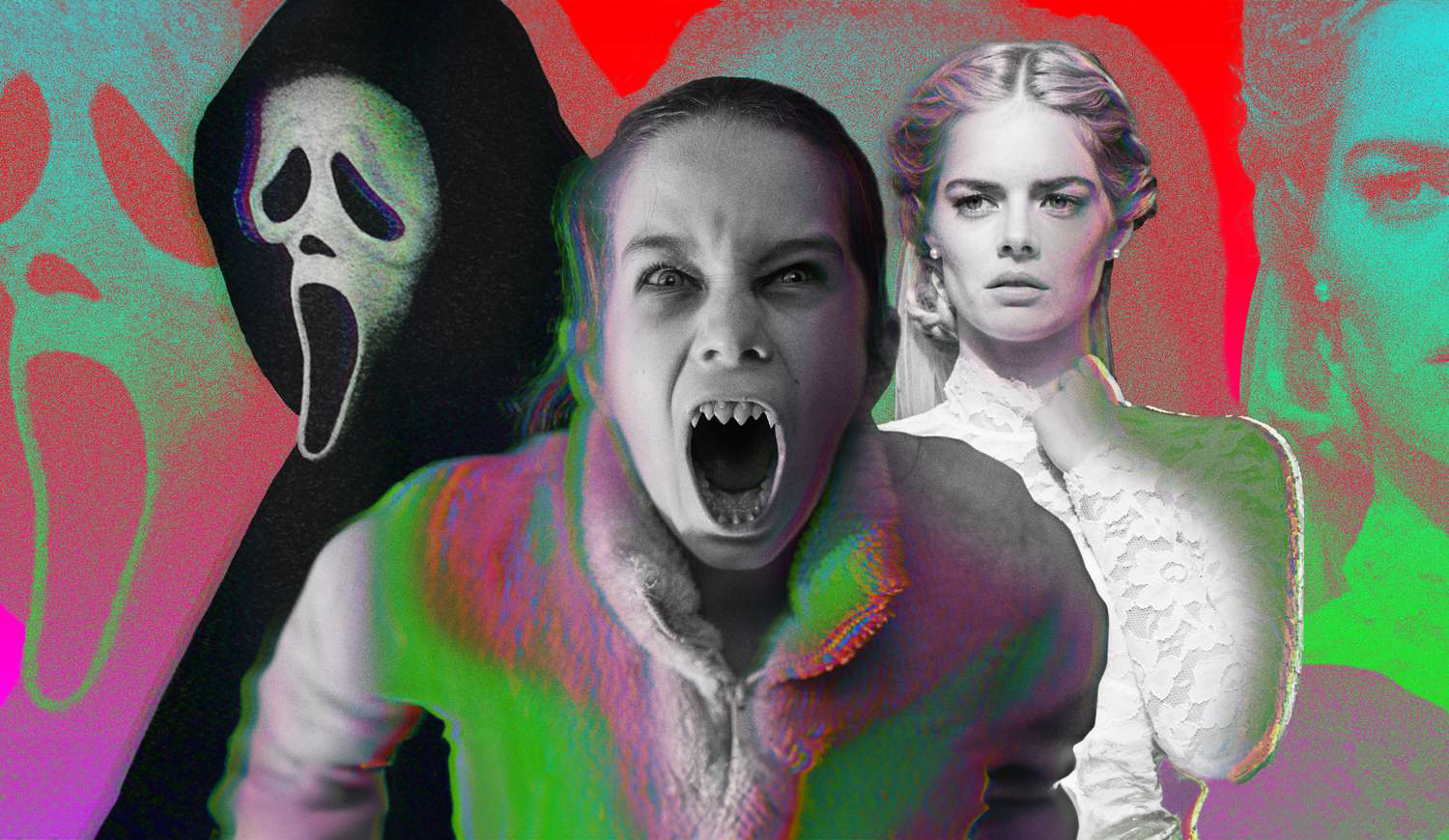
Matt Bettinelli-Olpin, Tyler Gillett, ati Chad Villa ti wa ni gbogbo filmmakers labẹ awọn collective aami ti a npe ni Ipalọlọ Redio. Bettinelli-Olpin ati Gillett jẹ awọn oludari akọkọ labẹ moniker yẹn lakoko ti Villella ṣe agbejade.
Wọn ti gba olokiki ni ọdun 13 sẹhin ati pe awọn fiimu wọn ti di mimọ bi nini “ifọwọsi si ipalọlọ Redio” kan. Wọn jẹ itajesile, nigbagbogbo ni awọn ohun ibanilẹru ninu, ati pe wọn ni awọn ilana iṣe breakneck. Won laipe film Abigaili ṣe apẹẹrẹ ibuwọlu yẹn ati boya o jẹ fiimu ti o dara julọ sibẹsibẹ. Wọn n ṣiṣẹ lọwọlọwọ lori atunbere ti John Carpenter's Sa Lati New York.
A ro pe a yoo lọ nipasẹ atokọ ti awọn iṣẹ akanṣe ti wọn ti ṣe itọsọna ati ṣe ipo wọn lati giga si kekere. Ko si ọkan ninu awọn fiimu ati awọn kukuru lori atokọ yii jẹ buburu, gbogbo wọn ni awọn iteriba wọn. Awọn ipo wọnyi lati oke de isalẹ jẹ awọn ti a ro pe o ṣafihan awọn talenti wọn dara julọ.
A ko pẹlu awọn fiimu ti wọn ṣe ṣugbọn ko ṣe itọsọna.
#1. Abigaili
Imudojuiwọn si fiimu keji lori atokọ yii, Abagail jẹ ilọsiwaju adayeba ti Radio ipalọlọ ká ife ti titiipa ibanuje. O tẹle ni lẹwa Elo kanna footsteps ti Ṣetan tabi Ko, ṣugbọn ṣakoso lati lọ si ọkan ti o dara julọ - ṣe nipa awọn vampires.
#2. Ṣetan tabi rara
Fiimu yii fi ipalọlọ Redio sori maapu naa. Lakoko ti ko ṣe aṣeyọri ni ọfiisi apoti bi diẹ ninu awọn fiimu miiran, Ṣetan tabi Ko fihan pe ẹgbẹ naa le jade ni ita aaye anthology lopin wọn ati ṣẹda igbadun, iwunilori, ati fiimu gigun gigun ti itajesile.
#3. Kigbe (2022)
nigba ti paruwo nigbagbogbo yoo jẹ ẹtọ idibo polarizing, iṣaaju yii, atẹle, atunbere - sibẹsibẹ o fẹ lati samisi o fihan iye si ipalọlọ Redio ti mọ ohun elo orisun. O je ko ọlẹ tabi owo-grabby, o kan kan ti o dara akoko pẹlu arosọ ohun kikọ ti a nifẹ ati titun eyi ti o dagba lori wa.
#4 Southbound (Ọna Jade)
Idakẹjẹ Redio ju modus operandi aworan ti wọn rii fun fiimu anthology yii. Lodidi fun awọn itan iwe, wọn ṣẹda aye ti o ni ẹru ni apakan wọn ti akole Ọnà jade, eyi ti o kan ajeji lilefoofo eeyan ati diẹ ninu awọn too ti akoko lupu. O jẹ iru igba akọkọ ti a rii iṣẹ wọn laisi kamera gbigbọn. Ti a ba ni ipo gbogbo fiimu yii, yoo wa ni ipo yii lori atokọ naa.
#5. V/H/S (10/31/98)
Fiimu ti o bẹrẹ gbogbo rẹ fun ipalọlọ Redio. Tabi o yẹ ki a sọ awọn apa ti o bere gbogbo. Paapaa botilẹjẹpe eyi kii ṣe ẹya-gigun ohun ti wọn ṣakoso lati ṣe pẹlu akoko ti wọn ni dara pupọ. Akọle wọn ipin 10/31/98, Aworan kukuru ti a rii ti o kan ẹgbẹ kan ti awọn ọrẹ ti o kọlu ohun ti wọn ro pe o jẹ exorcism ti a ti gbejade nikan lati kọ ẹkọ lati ma ṣe ro awọn nkan ni alẹ Halloween.
#6. Kigbe VI
Cranking soke awọn igbese, gbigbe si awọn ńlá ilu ati gbigba Oju -ẹmi lo ibon, Kigbe VI yi ẹtọ idibo si ori rẹ. Gẹgẹbi ọkan akọkọ wọn, fiimu yii ṣere pẹlu Canon ati ṣakoso lati ṣẹgun ọpọlọpọ awọn onijakidijagan ni itọsọna rẹ, ṣugbọn awọn miiran ya sọtọ fun awọ pupọ ju ni ita awọn ila ti jara olufẹ Wes Craven. Ti o ba ti eyikeyi atele ti a fifi bi awọn trope a ti lọ stale o je Kigbe VI, ṣugbọn o ṣaṣeyọri lati fun diẹ ninu ẹjẹ titun kuro ninu ipilẹ akọkọ ti o fẹrẹ to ọdun mẹta.
#7. Bìlísì Òrúnmìlà
Ni aipe ni aipe, eyi, fiimu ipari ẹya akọkọ ti ipalọlọ Redio, jẹ apẹẹrẹ ti awọn nkan ti wọn mu lati V/H/S. O ti ya aworan ni ibi gbogbo ti o rii ara aworan, ti n ṣafihan fọọmu ohun-ini kan, ati ẹya awọn ọkunrin ti ko ni oye. Niwọn igba ti eyi jẹ iṣẹ ile-iṣere akọkọ bonafide akọkọ wọn o jẹ okuta ifọwọkan iyalẹnu lati rii bii wọn ti wa pẹlu itan-akọọlẹ wọn.
Atunwo 'Ogun Abele': Ṣe O tọ Wiwo?
Tẹle ikanni YouTube tuntun wa "Awọn ohun ijinlẹ ati awọn fiimu" Nibi.
News
Boya Scariest, Julọ Disturbing jara ti Odun

O le ko ti gbọ ti Richard Gadd, ṣugbọn o ṣee ṣe pe yoo yipada lẹhin oṣu yii. Mini-jara rẹ Omo Reindeer o kan lu Netflix ati awọn ti o ni a ẹru jin besomi sinu abuse, afẹsodi, ati opolo aisan. Ohun ti o tun leru paapaa ni pe o da lori awọn inira gidi-aye Gadd.
Awọn koko ti awọn itan jẹ nipa ọkunrin kan ti a npè ni Donny Dunn dun nipasẹ Gadd ti o fẹ lati wa ni a imurasilẹ-soke apanilerin, sugbon o ti n ko ṣiṣẹ jade ki daradara ọpẹ si ipele fright stemming lati rẹ ailabo.
Ni ọjọ kan ni iṣẹ ọjọ rẹ o pade obinrin kan ti a npè ni Martha, ti o ṣere si pipe ti ko ni idiwọ nipasẹ Jessica Gunning, ti o ni itara lẹsẹkẹsẹ nipasẹ oore Donny ati iwo to dara. Ko pẹ diẹ ṣaaju ki o to pe orukọ rẹ ni “Baby Reindeer” ti o si bẹrẹ sii lepa rẹ lainidi. Ṣugbọn iyẹn nikan ni apex ti awọn iṣoro Donny, o ni awọn ọran ti iyalẹnu tirẹ.
Yi mini-jara yẹ ki o wa pẹlu ọpọlọpọ awọn okunfa, ki o kan wa ni kilo o jẹ ko fun alãrẹ ti okan. Awọn ẹru ti o wa nibi ko wa lati inu ẹjẹ ati gore, ṣugbọn lati inu ilokulo ti ara ati ti ọpọlọ ti o kọja eyikeyi asaragaga ti ẹkọ iṣe-ara ti o le ti rii tẹlẹ.
“Otitọ ni ti ẹdun pupọ, o han gedegbe: Mo ti lepa pupọ ati pe wọn ni ilokulo pupọ,” Gadd sọ fun eniyan, ó ń ṣàlàyé ìdí tó fi yí àwọn apá kan nínú ìtàn náà pa dà. "Ṣugbọn a fẹ ki o wa ni aaye ti aworan, bakannaa daabobo awọn eniyan ti o da lori."
Ẹya naa ti ni ipa ti o ṣeun si ẹnu-ọna rere, ati pe Gadd ti lo si olokiki.
Ó sọ pé: “Ó ṣe kedere pé ó ti kọlu ọ̀rọ̀ kan The Guardian. “Mo gbagbọ gaan ninu rẹ, ṣugbọn o ti yọ kuro ni iyara ti Mo ni rilara afẹfẹ diẹ.”
O le sanwọle Omo Reindeer lori Netflix ni bayi.
Ti o ba tabi ẹnikan ti o mọ ti ni ipalara ibalopọ, jọwọ kan si National Sexual Assault Hotline ni 1-800-656-HOPE (4673) tabi lọ si ojo ojo.
Atunwo 'Ogun Abele': Ṣe O tọ Wiwo?
Tẹle ikanni YouTube tuntun wa "Awọn ohun ijinlẹ ati awọn fiimu" Nibi.
Movies
Atilẹba 'Beetlejuice' Atẹle naa Ni ipo ti o nifẹ si
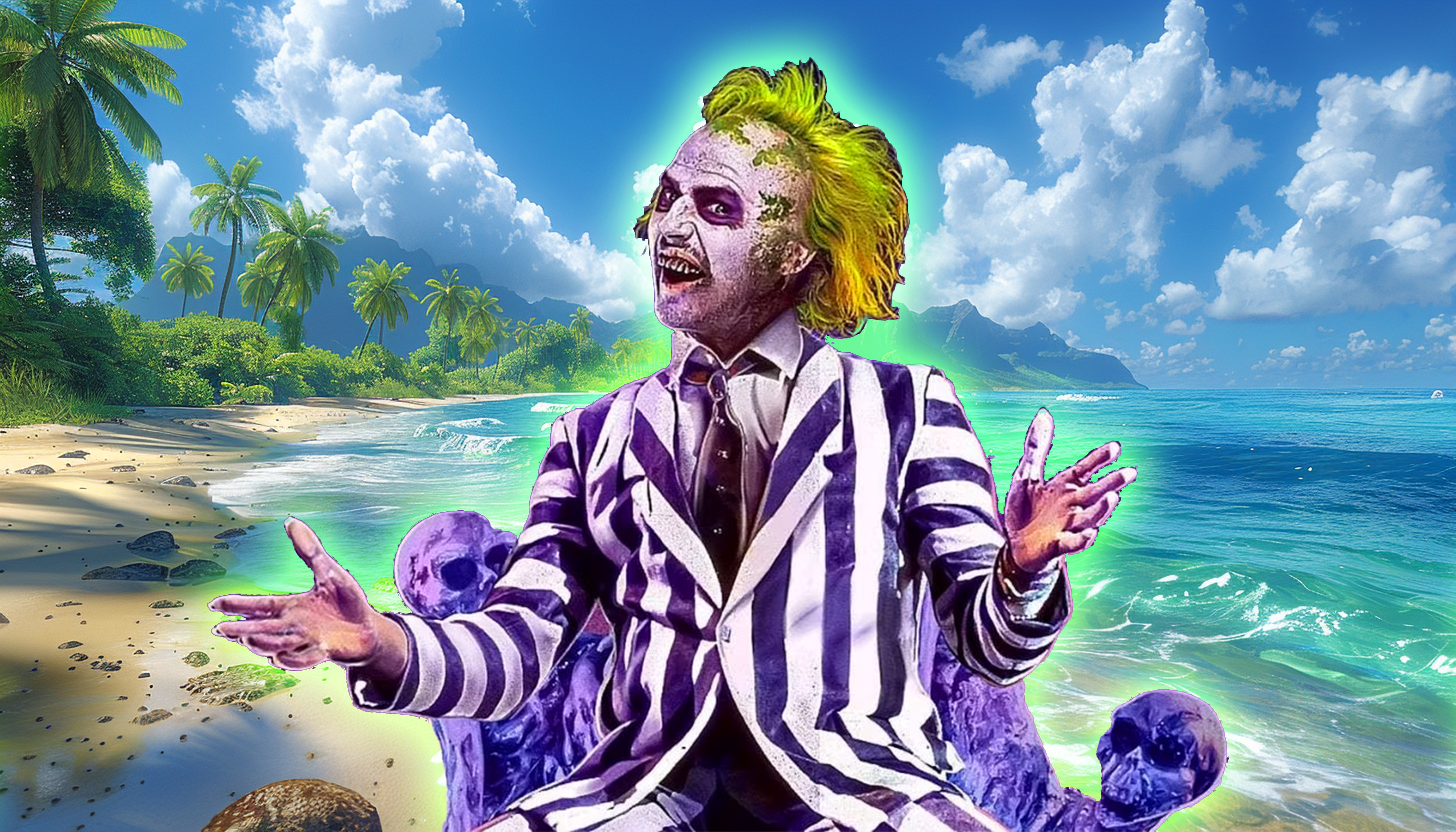
Pada ni awọn ipari '80s ati awọn ibẹrẹ' 90s awọn atẹle lati lu awọn fiimu kii ṣe laini bi wọn ṣe jẹ loni. O dabi diẹ sii “jẹ ki a tun ṣe ipo naa ṣugbọn ni ipo ti o yatọ.” Ranti Iyara 2, tabi Isinmi ti Ilu Yuroopu ti Lampoon ti Orilẹ-ede? Paapaa awọn ajeji, bi o ṣe dara julọ, tẹle ọpọlọpọ awọn aaye idite ti atilẹba; eniyan di lori ọkọ oju omi, Android kan, ọmọbirin kekere kan ninu ewu dipo ologbo kan. Nitorinaa o jẹ oye pe ọkan ninu awọn awada eleri olokiki julọ ti gbogbo akoko, Beetlejuice yoo tẹle ilana kanna.
Ni ọdun 1991 Tim Burton nifẹ lati ṣe atẹle kan si atilẹba 1988 rẹ, a pè é Beetlejuice Nlọ Ilu Hawahi:
“Ẹbi Deetz gbe lọ si Hawaii lati ṣe agbekalẹ ibi isinmi kan. Ikọle bẹrẹ, ati pe o ti ṣe awari ni kiakia pe hotẹẹli naa yoo joko lori oke ti ilẹ isinku atijọ. Beetlejuice wa lati gba ọjọ naa là.”
Burton fẹran iwe afọwọkọ ṣugbọn o fẹ diẹ ninu awọn tun-kọ nitoribẹẹ o beere akọwe iboju ti o gbona lẹhinna Daniel Omi ti o ti o kan ni ṣe idasi si Awọn igbona. O si kọja lori anfani ki o nse David Geffen ti a nṣe si Ẹgbẹ ọmọ ogun Beverly Hills akọwe Pamela Norris lasan.
Ni ipari, Warner Bros Kevin Smith lati Punch soke Beetlejuice Nlọ Ilu Hawahi, ó fi èrò náà ṣe yẹ̀yẹ́. wi pe, “Ṣe a ko sọ gbogbo ohun ti a nilo lati sọ ni Beetlejuice akọkọ? Ṣé a gbọ́dọ̀ lọ sí ilẹ̀ olóoru bí?”
Ọdun mẹsan lẹhinna a pa atele naa. Ile-iṣere naa sọ pe Winona Ryder ti dagba ju fun apakan naa ati pe gbogbo simẹnti tun nilo lati ṣẹlẹ. Ṣugbọn Burton ko fi silẹ, ọpọlọpọ awọn itọnisọna wa ti o fẹ lati mu awọn ohun kikọ rẹ, pẹlu Disney crossover.
"A sọrọ nipa ọpọlọpọ awọn ohun ti o yatọ," oludari naa wi ni Idanilaraya Kọọkan. “Iyẹn jẹ kutukutu nigbati a nlọ, Beetlejuice ati Ile nla Ebora, Beetlejuice Lọ West, ohunkohun ti. Ọpọlọpọ awọn nkan wa. ”
Sare-siwaju si 2011 nigbati a ti ṣeto iwe afọwọkọ miiran fun atẹle kan. Akoko yi onkqwe ti Burton ká Awọn Ojiji Dudu, Seth Grahame-Smith ti gbaṣẹ ati pe o fẹ lati rii daju pe itan naa kii ṣe atunṣe owo-owo tabi atunbere. Ọdun mẹrin lẹhinna, ni 2015, Iwe afọwọkọ kan ti fọwọsi pẹlu mejeeji Ryder ati Keaton sọ pe wọn yoo pada si awọn ipa wọn. Ninu 2017 Iwe afọwọkọ yẹn tun ṣe atunṣe ati lẹhinna ni ipamọ nikẹhin 2019.
Lakoko akoko iwe afọwọkọ ti o tẹle ni a n yipo ni Hollywood, ni 2016 olorin ti a npè ni Alex Murillo Pipa ohun ti o dabi ọkan-sheets fun a Beetlejuice atele. Botilẹjẹpe a ṣe wọn ati pe ko ni ibatan pẹlu Warner Bros. eniyan ro pe wọn jẹ gidi.
Boya awọn virality ti awọn ise ona jeki anfani ni a Beetlejuice atele lekan si, ati nikẹhin, o ti jẹrisi ni 2022 Beetlejuice ọdun 2 ní a alawọ ina lati kan akosile kọ nipa Wednesday onkqwe Alfred Gough ati Miles Millar. The Star ti o jara Jenna Ortega wole lori si awọn titun movie pẹlu o nya aworan ti o bere ni 2023. O tun jẹrisi pe Danny elfman yoo pada lati ṣe Dimegilio.
Burton ati Keaton gba pe fiimu tuntun ti akole Beetlejuice, Beetlejuice kii yoo gbarale CGI tabi awọn ọna imọ-ẹrọ miiran miiran. Wọn fẹ ki fiimu naa lero “ti a fi ọwọ ṣe.” Fiimu ti a we ni Oṣu kọkanla ọdun 2023.
O ti ju ọdun mẹta lọ lati wa pẹlu atẹle kan si Beetlejuice. Ireti, niwon nwọn wi aloha si Beetlejuice Nlọ Ilu Hawahi nibẹ ti wa to akoko ati àtinúdá lati rii daju Beetlejuice, Beetlejuice kii yoo bu ọla fun awọn ohun kikọ nikan, ṣugbọn awọn onijakidijagan ti atilẹba.
Beetlejuice, Beetlejuice yoo ṣii ni tiata ni Oṣu Kẹsan ọjọ 6.
Atunwo 'Ogun Abele': Ṣe O tọ Wiwo?
Tẹle ikanni YouTube tuntun wa "Awọn ohun ijinlẹ ati awọn fiimu" Nibi.
-

 News6 ọjọ ago
News6 ọjọ agoObinrin Mu Oku Si Banki Lati Wo Awọn Iwe Awin
-

 News7 ọjọ ago
News7 ọjọ agoEgungun Ẹsẹ 12 ti Ile Depot Ile Pada pẹlu Ọrẹ Tuntun kan, Ni afikun Iwọn Igbesi aye Tuntun lati Ẹmi Halloween
-

 News5 ọjọ ago
News5 ọjọ agoBrad Dourif Sọ pe Oun N Fahinti Ayafi Fun Ipa Pataki Kan
-

 Ajeji ati dani5 ọjọ ago
Ajeji ati dani5 ọjọ agoOkunrin ti won mu fun esun pe o gba ese ti o ya ni ibi ijamba ti o je
-

 Movies6 ọjọ ago
Movies6 ọjọ agoApejuwe Apakan, Abala Ibanuje Movie M. Night Shyamalan's 'Pakute' Tirela Tu silẹ
-

 Movies7 ọjọ ago
Movies7 ọjọ ago'Awọn alejò' ti kolu Coachella ni Instagramable PR Stunt
-

 Movies6 ọjọ ago
Movies6 ọjọ agoFiimu Spider miiran ti irako deba Shudder ni oṣu yii
-
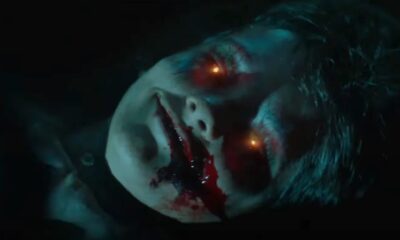
 Movies7 ọjọ ago
Movies7 ọjọ agoFiimu ibanilẹru aipẹ Renny Harlin 'Itusilẹ' ni AMẸRIKA ni oṣu yii
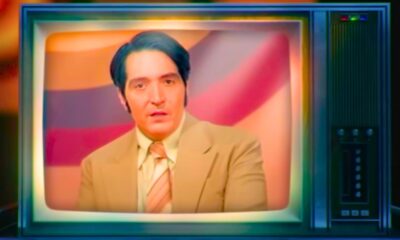

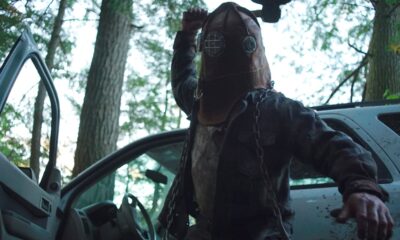



















O gbọdọ wọle lati firanṣẹ asọye kan Wo ile